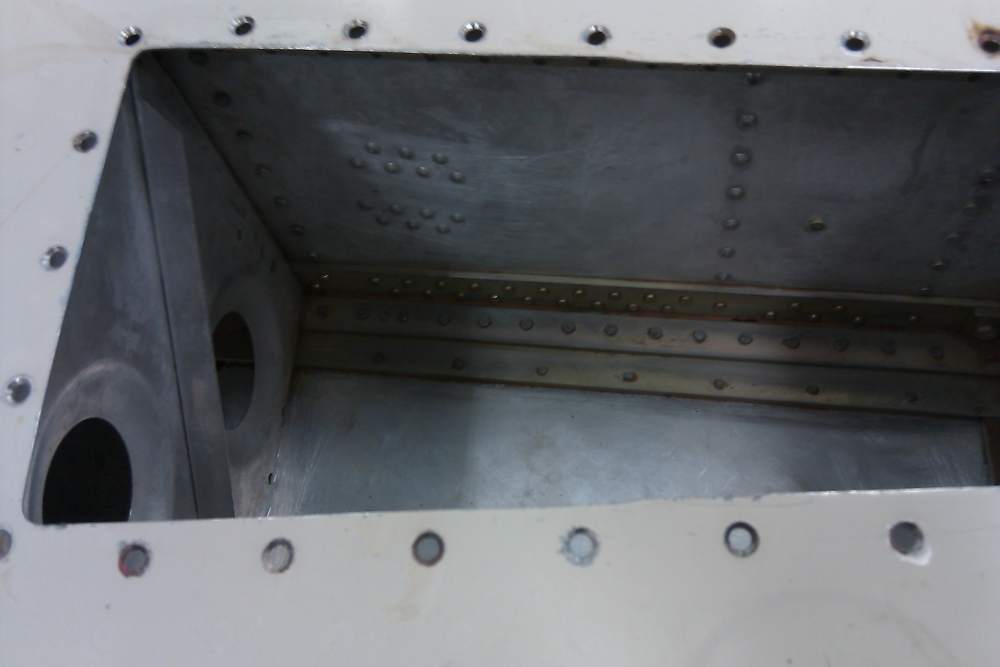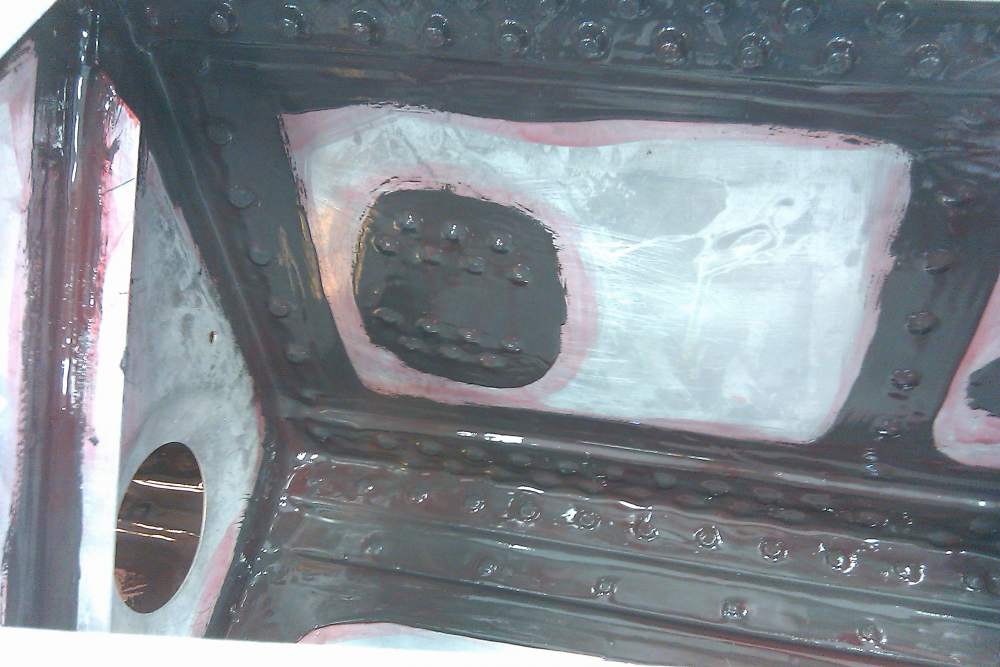-
Posts
1,124 -
Joined
-
Last visited
-
Days Won
4
Content Type
Profiles
Forums
Blogs
Gallery
Downloads
Events
Store
Everything posted by Greg Ellis
-
Along with other posts, I think this pretty much sums up why GA is so valuable at least to me. Other than the fact that I love flying myself and it is fun, I cannot stand the amount of time it takes to get onto an airline flight and off again. The waiting around, the pushing of people in line at TSA and check-in. Just don't tolerate the lines well so I would rather fly myself or just not go at all. My job does not require me to travel unless it is for CE. So if I can't go by Mooney I usually just do not go. Plus, to go by airlines, I have over an hour drive in awful traffic to the airport, check-in, TSA lines, wait to board (being there 1-2 hours before hand) so now I am 3+hours into this and I haven't even boarded my plane yet. I can go a lot of places in my Mooney in 3+ hours and have more fun doing it. Reminds me of a patient of mine. She asked me one day about being a pilot. I told her I was. She asked if I knew of any small commuter airlines that go from DFW to Colorado. Her family apparently took a trip on a small commuter airline out of DFW to northern Arkansas. She loved the fact that she did not have to go through TSA or any type of security or check-in lines. They departed out of the GA FBO at DFW airport. She got a glimpse behind the GA curtain and liked it. Anyways...I digress.
-

M20C head on collision with Hanger Beam
Greg Ellis replied to rdbroderson's topic in Vintage Mooneys (pre-J models)
Don’t have any help to offer but noticed that we are 5 serial numbers apart. Probably in the factory at the same time way back when. -

“Preventative” Maintenance & This Flying Season
Greg Ellis replied to Trenta's topic in General Mooney Talk
Or retainer clips on old, old models like my 63 C model. No screws on the outside. Clips on the inside. And mark them by number in such a way that they go back in the exact spot they came from or it won't work out well. -

Oil Lines Impeding Cowl Flaps
Greg Ellis replied to moontownMooney's topic in Vintage Mooneys (pre-J models)
I was about to mention this because this exact thing just happened to me. I was going through oil about 1 quart an hour. Could not figure out where it was going. Borescope of the cylinders looked fine. No signs of a leak anywhere. Nothing up on the cowling, nothing on the engine itself and nothing on the windshield. But I was running through the oil. When I would stop to fuel or put the airplane away I would get one drip onto the front tire. One day while the A&P was looking things over he noticed my oil cool line resting against the cowling much like in the photo. It had worn a very small hole in the oil cooler line. Small enough that nothing leaked out when the engine was not running but when the engine was running and a little pressure through the lines it was blowing through the oil. They replaced the lines and now I am back to my regular oil usage. So I would get that taken care of sooner than later. Those oil cooler lines are not cheap. -
So, have your installer slide out your IFD 540/440. Slide in an old GNS 530/430 that he keeps on the shelf for just this reason, install the autopilot, then remove the GNS 530 and reinstall your IFD as a minor alteration. Problem solved.... I say this jokingly of course.....
-
When will you be in Longview and where in Dallas do you need to go?
-

Interior Plastic Door Cracked on my Mooney
Greg Ellis replied to RonM's topic in General Mooney Talk
These two videos may help out as well…. This one isn’t great but may give you pointers on what not to do…. -
As long as the compressions are good, the borescope of the cylinders look clean and the oil usage is in the ballpark of normal then I would not worry about the 2200 smoh. If you are interested in purchasing get them to borescope the cylinders during the annual.
-
I do not see it listed as a webinar coming up on the EAA website. He did do a webinar last night on Social Flight but I missed it.
-
Yeah. I know who you are talking about. He has a very funny channel and a great sense of humor. Flies out of an airport just north of me. I was amazed that someone reported him. If they just watched his channel they would realize that it is all in jest. He has actually been called in twice I believe. One other for claims that he was cheating on an FAA written exam by asking for an answer on Facebook. I link the video here because it is actually quite funny in my opinion.
-
I agree. I would take the money that I saved with the purchase and do the overhaul. I would feel much more confident flying behind the engine once overhauled than one that sat forever, basically left to rot, running or not (evidenced by the fact that you had to hunt the owner down and the plane was not marketed for sale).
-
It's amazing how Youtube is just full of videos of pilots doing reckless and sometimes illegal things. FAA could have a field day with it. Does the FAA have a department that investigates what they see on Youtube videos? I have seen VFR cloud violations, planes landing on displaced thresholds, taxiing onto and taking off from a yellow chevroned end of a runway, descent below minimums on an approach that had visibility and clouds clearly below minimums (even reported so on the ATIS captured in the audio on the video). And this is all on video posted online for the world to see. I am amazed that the FAA doesn't at least look into some of these....maybe they do, I don't know because I don't video my flights and I definitely would not video my mistakes...
-
When I had a cylinder replaced a year or so ago, they noticed that I was missing one as well and another was worn bad enough that it was going to come off on its own eventually. My shop had one of them on the shelf and the other they made, as Clarence suggested. It was a fairly easy part to make.
-

Saving an M20C after gear-up landing
Greg Ellis replied to Sienicwi's topic in Vintage Mooneys (pre-J models)
I want to thank @Alan Fox for entering into this conversation. I learned a lot from his 3 or 4 posts that I really had no idea about. I was not sure how insurances work when it comes to airplanes and I appreciate his input and educating me. You just have to love MooneySpace.com!!!- 66 replies
-
- 2
-

-
- prop strike
- landing gear
-
(and 12 more)
Tagged with:
-

Prebuy needed in Ft.Worth (Granbury area)
Greg Ellis replied to dcrogers11's topic in General Mooney Talk
You might try Cliff Millican at CAM Aircraft in Fort Worth. He is at KFWS (Fort Worth Spinks). If he cannot do it he may know of someone who can. Phone number is 817-551-1530. He owns a Mooney and works on lots of them including mine. He also works on 2 rare Porsche Mooneys that have not been converted from the Porsche engine. -

Popping noise in headset shuts off noise canceling
Greg Ellis replied to RDuplechin's topic in Vintage Mooneys (pre-J models)
Lightspeed is usually very good with customer service. I would go to their website and put in a work order to send them back for repair. As long as the headset is a model that is still supported they can probably get them fixed at little to no charge. They have a pretty good warranty. When the batteries get low you should hear a repeating beeping sound to tell you that they are low. You usually get about an hour or so warning before the batteries are completely dead. The headset has an auto shut off feature. It sounds like it is kicking in when it should not be. -
I second what @Immelman stated about the abuse. Just think of the abuse some of these trainers take during flight training. On the power, off the power...full throttle to zero throttle and back to full throttle again. Multiple stalls, etc... where you are on an off the throttle in a short time. I would not want to put a K model through this. If it is possible, you could buy the K model if you just don't want to pass it up. Continue your lessons in whatever trainer you ae using (172, Warrior etc...) and maybe occasionally fly the K model with a Mooney proficient instructor to keep the airplane flying. Then when you are done you can transition right into the K model. This is if you just have to buy this plane, cannot pass up an awesome deal, and can get insured at a relatively affordable rate.
-
It is not a new problem and has been happening for a while. It does occur everywhere. I have switched the GNC300XL out with another GNC300 that I have and it still happens. The shop has a GNC300 that they were going to put in an try as well. Thanks for your response. I am passing along all of this information to the shop. I don't think they have had a chance to look at it. They have been very busy. They were going to try to get to it this week but I leave tomorrow for the Mooney Caravan clinic and was hoping they would solve it before I leave.
-
I passed the info along regarding the shielding. I appreciate your help with this.
-
That's a great idea. I will pass this along. Thanks.
-

Straight in approach isn’t always a good idea.
Greg Ellis replied to RJBrown's topic in Miscellaneous Aviation Talk
That plane belongs to American Flyers out of Addison, Texas. They had a school at Meacham in Fort Worth, Texas. I flew that plane back in around 2003 during my instrument training. -
Thanks for the information and I will pass this along to the avionics guys working on it. Not sure about the pins on the unit.
-
There is also a GAD29.



